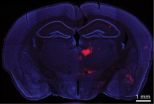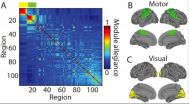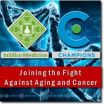(Press-News.org) Amsterdam, The Netherlands, April 8, 2015 -- Non-alcoholic fatty liver disease (NAFLD) is the most common cause of chronic liver disease in the western world. A new study published in the Journal of Hepatology shows that exercise, regardless of frequency or intensity, benefits obese and overweight adults with NAFLD.
NAFLD is considered the hepatic manifestation of metabolic syndrome and is commonly associated with obesity and diabetes. There are no approved drug treatments for NAFLD, but lifestyle interventions such as diet, exercise, and the resulting weight loss have been shown to help improve NAFLD. In particular, these interventions can improve some features of non-alcoholic steatohepatitis (NASH), which is the progressive form of NAFLD.
Weight loss is the commonly recommended strategy for all obese and overweight patients with NAFLD. Both aerobic and resistance training-based exercise regimens reduce liver fat as well as visceral fat. However, the exact role of the amount and the intensity of aerobic exercise that would be needed to reverse or improve NAFLD (or NASH) had not been systematically assessed.
In the new study published in the Journal of Hepatology, investigators examined the effect of various aerobic exercise regimens in improving liver and visceral fat in overweight and obese people who had sedentary lifestyles. Using a randomized, placebo-controlled clinical trial (RCT) design, they randomized 48 participants into four equal groups of 12 people: low-to-moderate intensity, high-volume aerobic exercise (LO:HI); high-intensity, low-volume aerobic exercise (HI:LO); low-to-moderate intensity, low-volume aerobic exercise (LO:LO); and placebo (PLA) for an eight-week period. Change in liver fat was assessed by magnetic resonance spectroscopy (MRS).
All three groups, irrespective of the exercise regimen, showed improvement in liver fat of about 18-29% from the average baseline 7.5%, compared with the placebo group in which liver fat increased by an average of 14%. The improvement was independent of weight loss. There were no significant differences between the various aerobic exercise regimens in reducing liver fat over an eight-week period. However, the investigators conducted additional exploratory analyses and proposed that there was a trend towards greater reduction in liver fat and visceral fat in the two groups that utilized either high intensity with low volume (HI:LO) or low intensity with high volume (LO:HI) aerobic exercise.
"The results from our study show that all exercise doses, irrespective of volume or intensity, were efficacious in reducing liver fat and visceral fat by an amount that was clinically significant, in previously inactive, overweight, or obese adults compared with placebo. These changes were observed without clinically significant weight loss," explained lead investigator Dr. Nathan Johnson, PhD, Senior Lecturer at the University of Sydney, Australia. "We found no difference between exercise regimens for these benefits," added Jacob George, PhD, MBBS, Professor of Hepatic Medicine at the University of Sydney, Australia, and Head of the Department of Gastroenterology and Hepatology at Westmead Hospital and University of Sydney.
In an editorial in the same issue, Rohit Loomba, MD, MHSc, of the Division of Gastroenterology and Epidemiology at the University of California, San Diego, and Helena Cortez-Pinto, MD, PhD, of the Gastroenterology Service, Hospital de Santa Maria, Lisbon, Portugal, observed that "there is good quality evidence to support that regular exercise is beneficial in reducing the risk of NAFLD. In addition, both aerobic and resistance training regimens are equally effective in reducing liver fat in individuals with NAFLD even in the absence of weight loss.
They suggest that duration of exercise and intensity of exercise are both important and one could perhaps personalize the exercise regimen based upon a participant's choice and still achieve similar results.
"There are, however, no data to support that exercise alone without weight loss can improve or reverse NASH. There is preliminary evidence that vigorous exercise may be associated with a decreased risk of having NASH," added Dr. Loomba and Dr. Cortez-Pinto. "The individual and joint effect of dose and intensity of exercise and their association with improvement in liver fat and other histologic features that are associated with NASH are key research priorities. In our expert opinion, a more stringent exercise-regimen than the U.S. Department of Health and Human Services recommends, coupled with dietary interventions, may be needed to induce improvement in liver histologic features associated with NASH."
INFORMATION:
A July, 2014 Call to Action to Prevent Skin Cancer by acting Surgeon General Dr. Boris Lushniak points out that indoor tanning is "strongly associated with increased skin cancer risk," but stops short of reporting that tanning causes cancer. A University of Colorado Cancer Center opinion published today in the American Journal of Preventive Medicine points out that UV tanning meets the same criteria as smoking as a cause of cancer and argues that announcing the causality could save lives.
"In 1964 when the Surgeon General finally reported that smoking causes lung cancer, ...
The secret communication of gibbons has been interpreted for the first time in a study published in the open access journal BMC Evolutionary Biology. The research reveals the likely meaning of a number of distinct gibbon whispers, or 'hoo' calls, responding to particular events and types of predator, and could provide clues on the evolution of human speech.
While lar gibbons (Hylobates lar) are mainly known for their loud and conspicuous songs, they can also produce a number of soft call types known as 'hoo's. These subtle calls have been alluded to in studies dating ...
Life has adapted to all sorts of extreme environments on Earth, among them, animals like the deer mouse, shimmying and shivering about, and having to squeeze enough energy from the cold, thin air to fuel their bodies and survive.
Now, in a new publication in the journal Molecular Biology and Evolution, Scott, Cheviron et al., have examined the underlying muscle physiology from a group of highland and lowland deer mice. Deer mice were chosen because they exhibit the most extreme altitude range of any North American mammal, occurring below sea levels in Death Valley to ...
Cold Spring Harbor, NY - The prefrontal cortex (PFC) plays an important role in cognitive functions such as attention, memory and decision-making. Faulty wiring between PFC and other brain areas is thought to give rise to a variety of cognitive disorders. Disruptions to one particular brain circuit--between the PFC and another part of the brain called the thalamus--have been associated with schizophrenia, but the mechanistic details are unknown. Now, Cold Spring Harbor Laboratory scientists have discovered an inhibitory connection between these brain areas in mice that ...
The Burgess Shale Formation, in the Canadian Rockies of British Columbia, is one of the most famous fossil locations in the world. A recent Palaeontology study introduces a 508 million year old (middle Cambrian) arthropod--called Yawunik kootenayi--from exceptionally preserved specimens of the new Marble Canyon locality within the Burgess Shale Formation.
Its frontal appendage--the "megacheiran great appendage"--is remarkably adorned with teeth, emphasizing an advanced predatory function. The appendage also had long hair-like flagella at the end that likely served a sensory ...
Why do some people learn a new skill right away, while others only gradually improve? Whatever else may be different about their lives, something must be happening in their brains that captures this variation.
Researchers at the University of Pennsylvania, the University of California, Santa Barbara, and Johns Hopkins University have taken a network science approach to this question. In a new study, they measured the connections between different brain regions as participants learned to play a simple game. The differences in neural activity between the quickest and slowest ...
The results appear in the 2015 2nd issue of the journal of Human Genome Variation. To see a video about the partnership between Champions and Insilico, visit: http://tinyurl.com/InsilicoChampions .
Colorectal cancer (CRC) is the third most commonly diagnosed cancer and the second leading cause of cancer deaths in the United States. More than 50,000 people die of CRC each year due to tumor spreading to other organs and almost half of all newly diagnosed patients are in an advanced stage of cancer (metastatic CRC or mCRC) when they are first diagnosed.
With the development ...
A Northwestern University research team potentially has found a safer way to keep blood vessels healthy during and after surgery.
During open-heart procedures, physicians administer large doses of a blood-thinning drug called heparin to prevent clot formation. When given too much heparin, patients can develop complications from excessive bleeding. A common antidote is the compound protamine sulfate, which binds to heparin to reverse its effects.
"Protamine is a natural compound that has been used in surgeries for many decades," said Guillermo Ameer, professor of biomedical ...
The combination of two well-known drugs will have unprecedented effects on pain management, says new research from Queen's.
Combining morphine, a narcotic pain reliever, and nortriptyline, an antidepressant, has been found to successfully relieve chronic neuropathic pain - or a localized sensation of pain due to abnormal function of the nervous system - in 87 per cent of patients, and significantly better than with either drug alone.
"Chronic pain is an increasingly common problem and can exert disastrous personal, societal, and socio-economic impacts on patients, their ...
In the largest study of its kind to date, researchers at Stanford University School of Medicine and their colleagues have found that worldwide only a limited number of mutations are responsible for most cases of transmission of drug-resistant HIV.
HIV, the virus that causes AIDS, can mutate in the presence of antiviral drugs, and these mutations can be transmitted from one person to the next.
In the new study of more than 50,000 patients in 111 countries, the researchers found a small group of mutations accounted for a majority of the cases of transmission-related resistance ...



